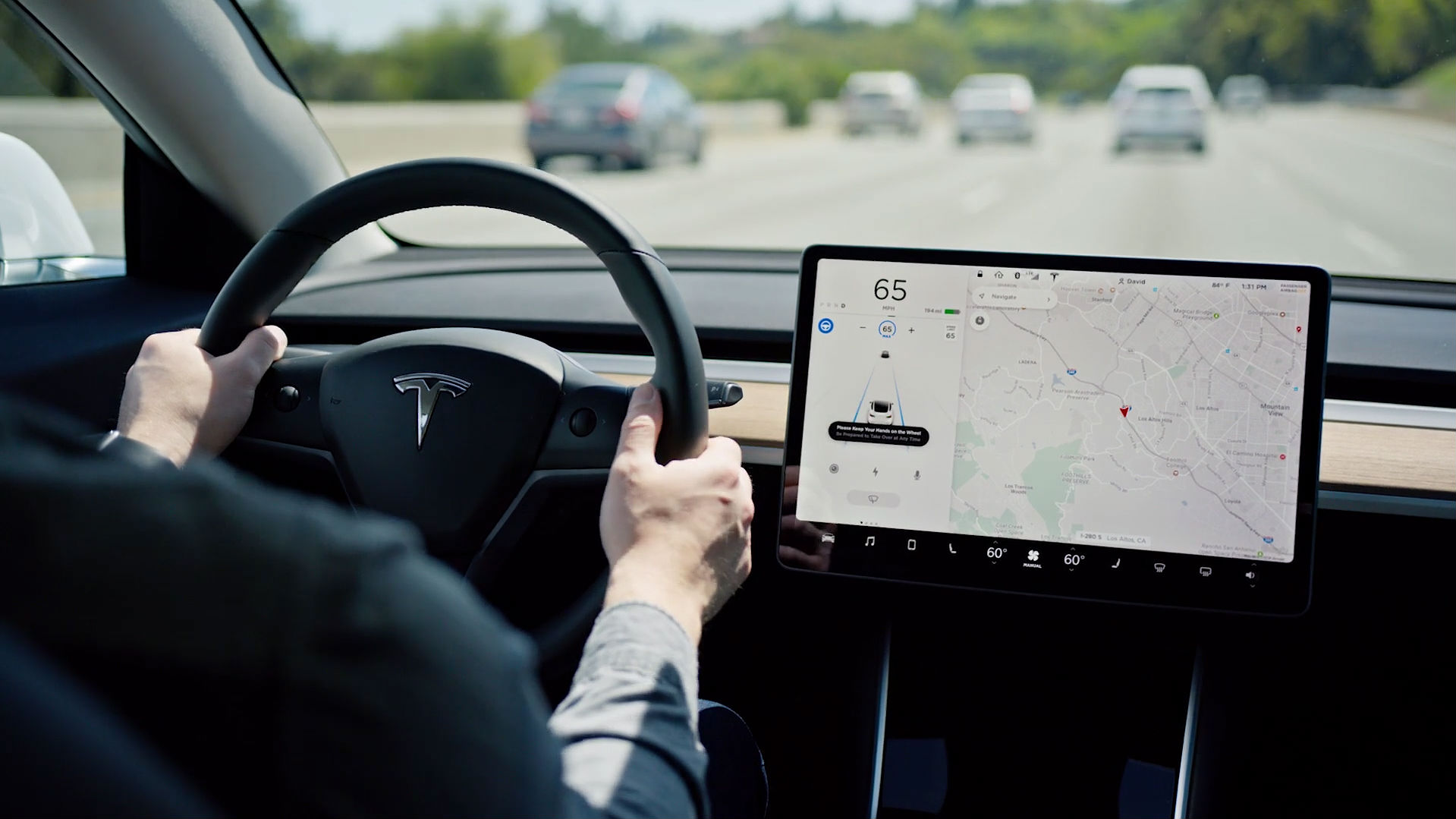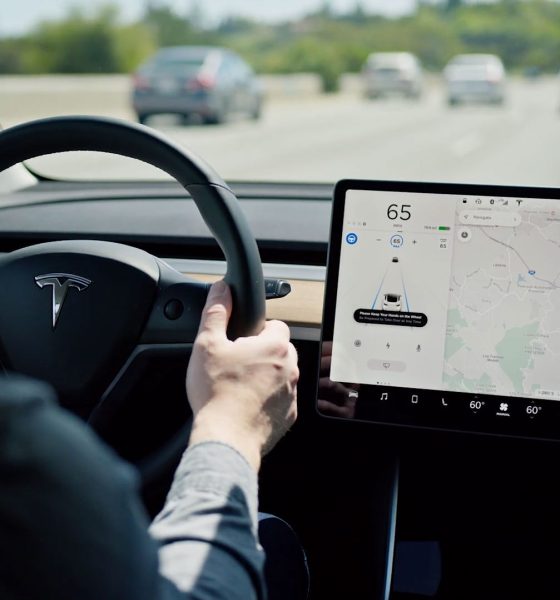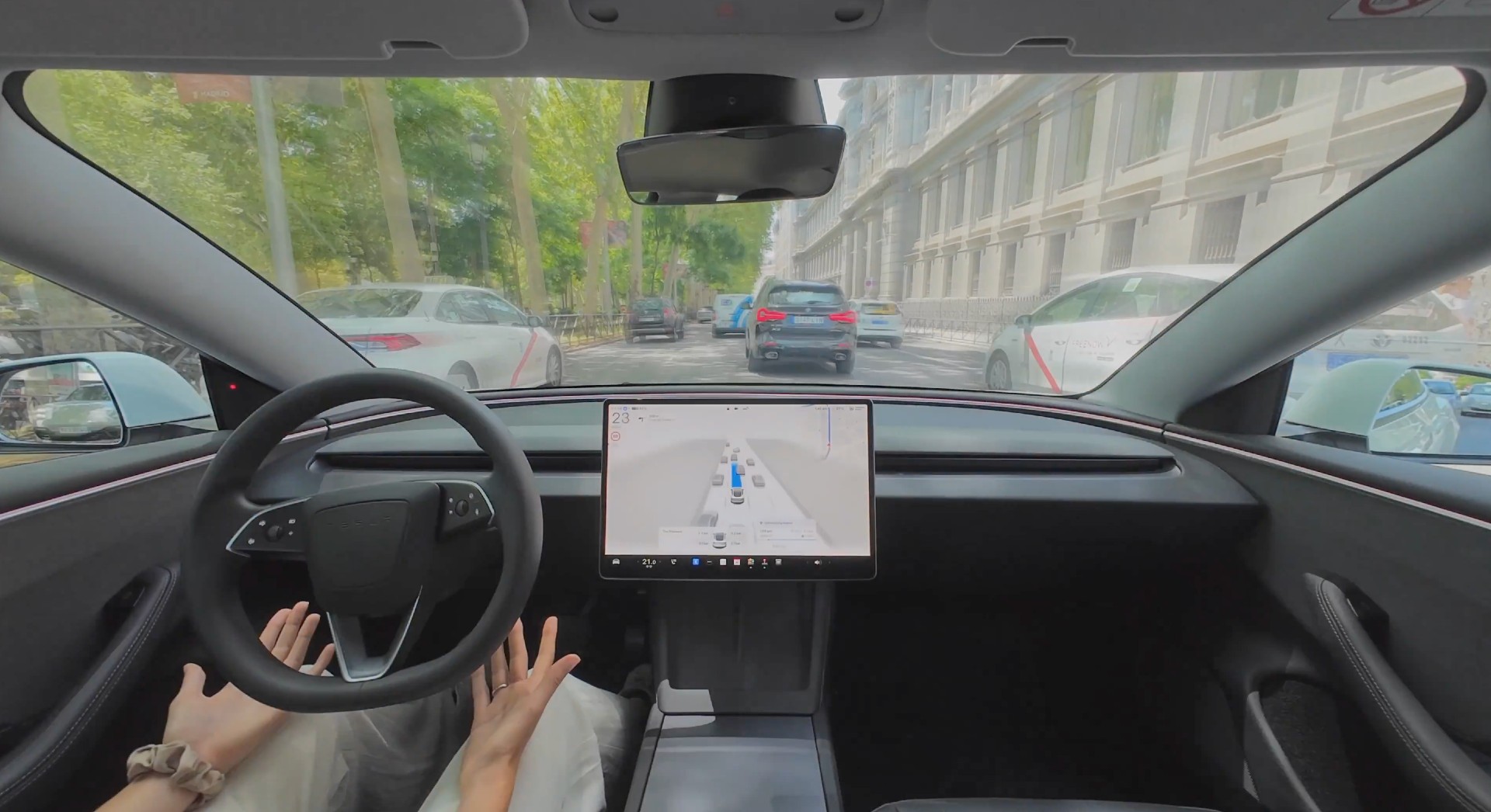

Investor's Corner
Tesla’s Autopilot probe worries Morgan Stanley with ‘reputational risks’
The recently launched Tesla Autopilot probe by the NHTSA is said to be a greater threat to the automaker’s reputation than its financial situation, according to a new note from Morgan Stanley. Headed by analyst Adam Jonas, the note outlines the potential risks that Tesla could face with the probe, which intends to investigate 11 instances of Autopilot-equipped cars crashing into emergency vehicles, according to the documents.
The note outlines four potential risk factors that Tesla could face in a long and drawn-out battle to clear its name of any wrongdoing. In the initial years of autonomous driving development, nearly any instance of a vehicle being involved in an accident has increased skepticism over the potential of future self-driving cars. While Tesla Autopilot only operates on Level 2 autonomy, with Level 5 being a fully operational self-driving machine, the company admittedly states that drivers should still remain alert while the vehicle is in operation, never taking their eyes off the road.
However, this is not the instance for every driver. While Autopilot vehicles from Tesla were involved in accidents on a significantly less-frequent occasion than the national average based on NHTSA statistics, Tesla vehicles involved in accidents seem to catch more media attention than any other instance on the road. After all, we don’t hear about every Chevy Malibu or Ford F-150 crash that occurs, but the false narrative that Teslas drive themselves still floats around in the form of catchy headlines or misleading articles.
The chance for reputational risks is one of the most notable points of the Morgan Stanley note and is the point that the analysts expand on the most. “Vehicle safety actions and recalls (both voluntary and involuntary) are a fact of life in the auto industry, despite cars achieving greater capability and quality over time. While we are not making any changes to our Tesla model and price target at this time, the NHTSA serves as a reminder to investors about the importance of vehicle safety as we turn over greater portions of driving to software in a network,” the note said.
A Tesla Model 3 on Autopilot. [Credit: LivingTesla/YouTube]
Of course, semi-autonomous vehicles, and autonomy in general for automotive, is a young and relatively new feature in the world of cars. There are bound to be mistakes and incidents just as there were with early vehicles. Accidents happen, but the early adopters of motor vehicles did not give up on the task of making them better and safer, and that’s precisely what will happen as more companies take a crack at the potential autonomous driving sector.
“The regulatory, legal, and moral/ethical nuances are difficult, if not impossible, to model. As human driving transitions to computer driving, accident frequency is expected to decline by 90% or more (some experts insist accident frequency must ultimately fall by greater than 99.9%). At the same time, accident ‘fault’ transitions from someone to something,” the note also states. “Just our view, but there is no moral equivalency between a ‘human-caused’ traffic fatality and a ‘system-caused’ traffic fatality. Over time, we believe the industry should be in position to provide vehicle data for 3rd party validation to prove the significant societal/health and safety benefits of autonomy.
Morgan Stanley on the NHTSA probe ??$TSLA pic.twitter.com/wF9r2fuMsq
— David Tayar (@davidtayar5) August 18, 2021
As noted yesterday in an interview with former Ford CEO Mark Fields, the NHTSA study into Tesla could take up to 18 months. Morgan Stanley reiterates this point in its note, especially with Autopilot’s “high profile nature.” Unfortunately, Tesla’s flashy name and mainstream personality as an automaker, especially a revolutionary one, has put them at center stage for this kind of attention. Those with a reasonable platform may not understand all of the functionalities or safety precautions of Autopilot’s nature. Still, unfortunately, many of the accidents are being described as the software’s fault, although many of the instances are actually driver errors.
At the time of writing, TSLA stock was trading at $689.79, up over 3.6%.
Disclosure: Joey Klender is a TSLA Shareholder.

Investor's Corner
Tesla price target boost from its biggest bear is 95% below its current level

Tesla stock (NASDAQ: TSLA) just got a price target boost from its biggest bear, Gordon Johnson of GLJ Research, who raised his expected trading level to one that is 95 percent lower than its current trading level.
Johnson pushed his Tesla price target from $19.05 to $25.28 on Wednesday, while maintaining the ‘Sell’ rating that has been present on the stock for a long time. GLJ has largely been recognized as the biggest skeptic of Elon Musk’s company, being particularly critical of the automotive side of things.
Tesla has routinely been called out by Johnson for negative delivery growth, what he calls “weakening demand,” and price cuts that have occurred in past years, all pointing to them as desperate measures to sell its cars.
Johnson has also said that Tesla is extremely overvalued and is too reliant on regulatory credits for profitability. Other analysts on the bullish side recognize Tesla as a company that is bigger than just its automotive side.
Many believe it is a leader in autonomous driving, like Dan Ives of Wedbush, who believes Tesla will have a widely successful 2026, especially if it can come through on its targets and schedules for Robotaxi and Cybercab.
Justifying the price target this week, Johnson said that the revised valuation is based on “reality rather than narrative.” Tesla has been noted by other analysts and financial experts as a stock that trades on narrative, something Johnson obviously disagrees with.
Dan Nathan, a notorious skeptic of the stock, turned bullish late last year, recognizing the company’s shares trade on “technicals and sentiment.” He said, “From a trading perspective, it looks very interesting.”
Tesla bear turns bullish for two reasons as stock continues boost
Johnson has remained very consistent with this sentiment regarding Tesla and his beliefs regarding its true valuation, and has never shied away from putting his true thoughts out there.
Tesla shares closed at $431.40 today, about 95 percent above where Johnson’s new price target lies.
Investor's Corner
Tesla gets price target bump, citing growing lead in self-driving

Tesla (NASDAQ: TSLA) stock received a price target update from Pierre Ferragu of Wall Street firm New Street Research, citing the company’s growing lead in self-driving and autonomy.
On Tuesday, Ferragu bumped his price target from $520 to $600, stating that the consensus from the Consumer Electronics Show in Las Vegas was that Tesla’s lead in autonomy has been sustained, is growing, and sits at a multiple-year lead over its competitors.
CES 2026 validates Tesla’s FSD strategy, but there’s a big lag for rivals: analyst
“The signal from Vegas is loud and clear,” the analyst writes. “The industry isn’t catching up to Tesla; it is actively validating Tesla’s strategy…just with a 12-year lag.”
The note shows that the company’s prowess in vehicle autonomy is being solidified by lagging competitors that claim to have the best method. The only problem is that Tesla’s Vision-based approach, which it adopted back in 2022 with the Model 3 and Model Y initially, has been proven to be more effective than competitors’ approach, which utilizes other technology, such as LiDAR and sensors.
Currently, Tesla shares are sitting at around $433, as the company’s stock price closed at $432.96 on Tuesday afternoon.
Ferragu’s consensus on Tesla shares echoes that of other Wall Street analysts who are bullish on the company’s stock and position within the AI, autonomy, and robotics sector.
Dan Ives of Wedbush wrote in a note in mid-December that he anticipates Tesla having a massive 2026, and could reach a $3 trillion valuation this year, especially with the “AI chapter” taking hold of the narrative at the company.
Ives also said that the big step in the right direction for Tesla will be initiating production of the Cybercab, as well as expanding on the Robotaxi program through the next 12 months:
“…as full-scale volume production begins with the autonomous and robotics roadmap…The company has started to test the all-important Cybercab in Austin over the past few weeks, which is an incremental step towards launching in 2026 with important volume production of Cybercabs starting in April/May, which remains the golden goose in unlocking TSLA’s AI valuation.”
Tesla analyst breaks down delivery report: ‘A step in the right direction’
Tesla has transitioned from an automaker to a full-fledged AI company, and its Robotaxi and Cybercab programs, fueled by the Full Self-Driving suite, are leading the charge moving forward. In 2026, there are major goals the company has outlined. The first is removing Safety Drivers from vehicles in Austin, Texas, one of the areas where it operates a ride-hailing service within the U.S.
Ultimately, Tesla will aim to launch a Level 5 autonomy suite to the public in the coming years.
Investor's Corner
Tesla Q4 delivery numbers are better than they initially look: analyst
The Deepwater Asset Management Managing Partner shared his thoughts in a post on his website.

Longtime Tesla analyst and Deepwater Asset Management Managing Partner Gene Munster has shared his insights on Tesla’s Q4 2025 deliveries. As per the analyst, Tesla’s numbers are actually better than they first appear.
Munster shared his thoughts in a post on his website.
Normalized December Deliveries
Munster noted that Tesla delivered 418k vehicles in the fourth quarter of 2025, slightly below Street expectations of 420k but above the whisper number of 415k. Tesla’s reported 16% year-over-year decline, compared to +7% in September, is largely distorted by the timing of the tax credit expiration, which pulled forward demand.
“Taking a step back, we believe September deliveries pulled forward approximately 55k units that would have otherwise occurred in December or March. For simplicity, we assume the entire pull-forward impacted the December quarter. Under this assumption, September growth would have been down ~5% absent the 55k pull-forward, a Deepwater estimate tied to the credit’s expiration.
“For December deliveries to have declined ~5% year over year would imply total deliveries of roughly 470k. Subtracting the 55k units pulled into September results in an implied December delivery figure of approximately 415k. The reported 418k suggests that, when normalizing for the tax credit timing, quarter-over-quarter growth has been consistently down ~5%. Importantly, this ~5% decline represents an improvement from the ~13% declines seen in both the March and June 2025 quarters.“
Tesla’s United States market share
Munster also estimated that Q4 as a whole might very well show a notable improvement in Tesla’s market share in the United States.
“Over the past couple of years, based on data from Cox Automotive, Tesla has been losing U.S. EV market share, declining to just under 50%. Based on data for October and November, Cox estimates that total U.S. EV sales were down approximately 35%, compared to Tesla’s just reported down 16% for the full quarter. For the first two months of the quarter, Cox reported Tesla market share of roughly a 65% share, up from under 50% in the September quarter.
“While this data excludes December, the quarter as a whole is likely to show a material improvement in Tesla’s U.S. EV market share.“








